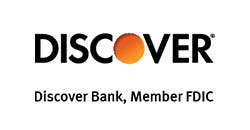Morgan Stanley Private Bank Review 2024
The Bankrate promise
At Bankrate we strive to help you make smarter financial decisions. While we adhere to strict , this post may contain references to products from our partners. Here's an explanation for .
At a glance

Checking
Savings
About Bankrate Score
Overview
Deposit products offered by Morgan Stanley Private Bank are worth considering if you’re looking to consolidate your banking and investing at one financial institution.
Highlights
- High APY
- Free Checking
- ATM Fee Refunds
Offers featured here have been sponsored by our partners, which impacts how, where, and in what order the products appear.

APY, or annual percentage yield, is the yearly return on a bank or investment account.
APY, or annual percentage yield, is the yearly return on a bank or investment account.
Bankrate Savings rating = 4.4/5
Bankrate scores are objectively determined by our editorial team. Our scoring formula weighs several factors consumers should consider when choosing financial products and services.

APY, or annual percentage yield, is the yearly return on a bank or investment account.
APY, or annual percentage yield, is the yearly return on a bank or investment account.
Bankrate Savings rating = 4.9/5
Bankrate scores are objectively determined by our editorial team. Our scoring formula weighs several factors consumers should consider when choosing financial products and services.

APY, or annual percentage yield, is the yearly return on a bank or investment account.
APY, or annual percentage yield, is the yearly return on a bank or investment account.
Bankrate CD rating = 4.7/5
Bankrate scores are objectively determined by our editorial team. Our scoring formula weighs several factors consumers should consider when choosing financial products and services.
Offers featured here have been sponsored by our partners, which impacts how, where, and in what order the products appear.
Overall
Morgan Stanley Private Bank offers a savings account that earns a high APY, as well as free and interest-bearing checking accounts. Those who wish to open a money market account or certificates of deposit (CDs) will need to look elsewhere, however.
Pros
-
The savings account earns a competitive yield.
-
There are no minimum deposit requirements to open a savings account.
-
Customers have check-writing privileges, and the first checkbook is complimentary.
-
The interest checking account receives unlimited ATM fee refunds.
Cons
-
The bank doesn’t offer a full range of deposit products.
-
The requirements to avoid monthly fees are steep for the Max-Rate Checking account.
Morgan Stanley Private Bank banking products
Morgan Stanley Private Bank savings overview
According to the bank’s website, the Premium Savings Account receives Federal Deposit Insurance Corp. (FDIC) coverage of up to $500,000 for individual accounts and up to $1 million for joint accounts. This is twice the amount offered for a deposit account at most banks.
Pros
-
The account earns a high rate of return.
-
There are no monthly service fees or minimum deposit requirements.
-
Extra FDIC insurance coverage is provided.
Cons
-
There’s no way to deposit cash into the account.
-
See how rates for this account have changed over time. Interact with the trend lines to view APY by date.
Morgan Stanley Private BankAPYAPYNational average APYHow do we get this data?
Offers featured here have been sponsored by our partners, which impacts how, where, and in what order the products appear.

APY, or annual percentage yield, is the yearly return on a bank or investment account.
APY, or annual percentage yield, is the yearly return on a bank or investment account.
Bankrate Savings rating = 4.4/5
Bankrate scores are objectively determined by our editorial team. Our scoring formula weighs several factors consumers should consider when choosing financial products and services.
Bank fees
| Fee | Charged? |
|---|---|
| Overdraft fee | $0 |
| Non-sufficient funds fee | $0 |
| Monthly maintenance fee | $0 - $15 |
| Out-of-network ATM fee | None |
| Excessive withdrawal fee | None* |
Customer experience
Customer support
Branch availability: The checking and savings accounts are online-only accounts, so customers don’t have access to in-branch service.
Customer service: Customer service can be reached by phone on a 24/7 basis.
Digital experience
Morgan Stanley Private Bank customers with checking or savings accounts can use the E-Trade mobile app to transfer cash, deposit checks and pay bills. Those with E-Trade investment accounts can also access those through the app. The app currently has ratings of 4.6 stars in the App Store and 3.9 stars on Google Play.
About Morgan Stanley Private Bank
Morgan Stanley Private Bank offers savings and checking accounts that were previously available from E-Trade Bank, the banking unit of E-Trade Financial Corp., which was acquired by Morgan Stanley in October 2020. It is now called E-Trade from Morgan Stanley.
How does Morgan Stanley Private Bank compare to other banks?
Morgan Stanley Private Bank vs. Chase
Morgan Stanley is a completely different entity from JPMorgan Chase. Through E-Trade, Morgan Stanley now offers some of the same deposit products as Chase Bank, including a checking and a savings account.
In contrast to Chase’s many offerings, Morgan Stanley’s Premium Savings Account and Checking Account come with little-to-no fees and high yields. However, Chase is available in just about every state in the country and offers a much wider range of deposit products, including multiple options for savings and checking accounts in addition to CDs. Customers looking to consolidate their bank accounts under one roof may find that Chase is a better choice, but it’s important to note that, in contrast with Morgan Stanley, Chase’s accounts won’t do much to grow your savings.
However, you can bring your basic deposit accounts with an investing account with Morgan Stanley, since the bank offers a brokerage account in addition to checking and savings accounts.
Morgan Stanley Private Bank FAQs
Review methodology
We assign a score to each type of account and its features, weigh them carefully based on importance to account holders and determine an overall score. Read our full review methodology.
Thank you for sharing your experience with Bankrate


















